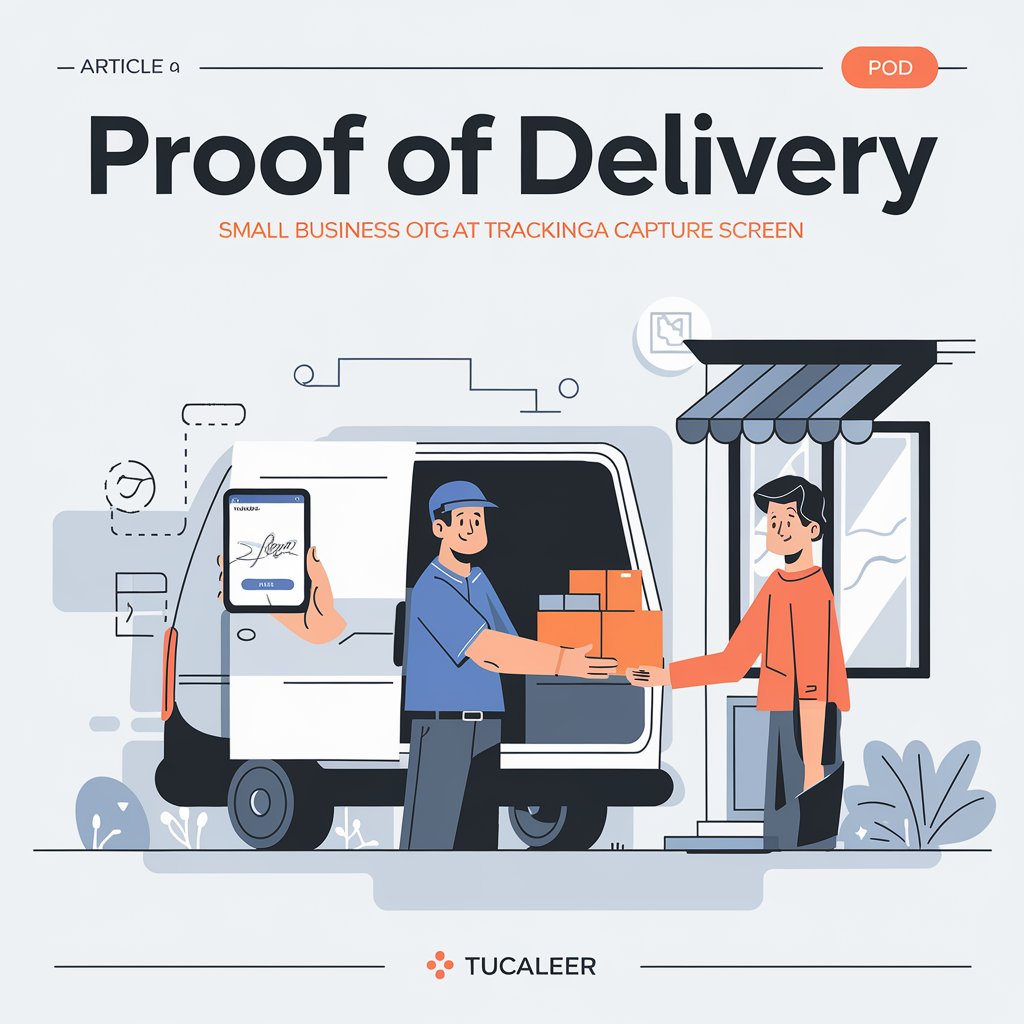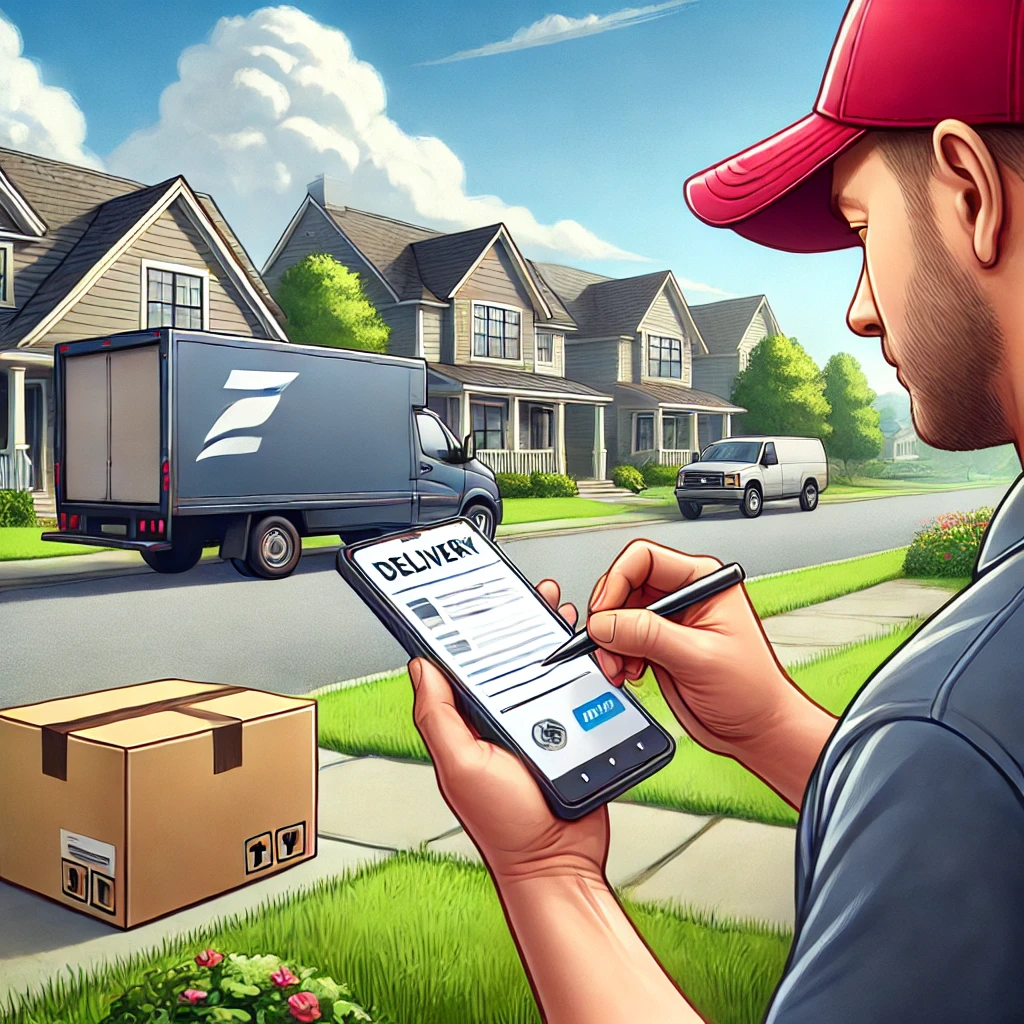Proof of Delivery Software: Revolutionizing Last-Mile Logistics

Understanding Proof of Delivery Software
Proof of Delivery software, also known as POD software or electronic proof of delivery system, is a digital solution designed to replace traditional paper-based delivery confirmation methods. It allows delivery personnel to capture electronic signatures, photos, and other relevant information at the point of delivery, providing real-time confirmation and documentation of successful deliveries.
Key Benefits of Proof of Delivery Software
- Improved Accuracy: Eliminate errors associated with manual data entry
- Enhanced Efficiency: Streamline the delivery confirmation process
- Real-time Visibility: Provide instant updates on delivery status
- Increased Customer Satisfaction: Offer transparent and professional delivery experiences
- Reduced Paperwork: Minimize physical documentation and storage needs
- Cost Savings: Lower operational costs associated with paper-based systems
- Environmental Impact: Reduce paper usage and contribute to sustainability efforts
- Faster Billing Cycles: Expedite invoicing with immediate delivery confirmation
Essential Features of Proof of Delivery Software
When evaluating proof of delivery solutions, look for these key features:
1. Electronic Signature Capture
The core functionality of any POD software is its ability to capture electronic signatures. Look for:
- Touchscreen compatibility: Easy signature capture on various devices
- Signature verification: Tools to compare signatures with previous records
- Multiple signature options: Ability to capture multiple signatures for bulk deliveries
2. Photo and Video Documentation
Visual evidence can be crucial for dispute resolution and quality control:
- High-quality image capture: Ability to take clear photos of delivered items
- Video recording: Option to record short videos of the delivery process
- Timestamp and geotag: Automatic addition of time and location data to media files
3. GPS Tracking and Geofencing
Location-based features enhance the accuracy and security of deliveries:
- Real-time GPS tracking: Monitor the exact location of delivery personnel
- Geofencing: Set up virtual boundaries to trigger automatic notifications
- Route optimization: Suggest the most efficient delivery routes
4. Barcode and QR Code Scanning
For businesses handling numerous packages, scanning capabilities are essential:
- Multi-format support: Ability to scan various barcode and QR code formats
- Batch scanning: Quickly process multiple items in a single delivery
- Inventory integration: Link scanned items with inventory management systems
5. Offline Functionality
Ensure your POD software can function in areas with poor internet connectivity:
- Data caching: Store delivery information locally on the device
- Automatic syncing: Upload data to the central system when connectivity is restored
- Offline map access: Navigate to delivery locations without an internet connection
6. Customer Communication Tools
Enhance the delivery experience with built-in communication features:
- Automated notifications: Send SMS or email updates on delivery status
- Real-time ETA updates: Provide accurate estimated arrival times to customers
- Two-way communication: Allow customers to message drivers directly
7. Reporting and Analytics
Data-driven insights can help improve operations. Look for software that offers:
- Customizable dashboards: View key performance indicators at a glance
- Detailed reports: Analyze delivery success rates, time efficiency, and customer satisfaction
- Export capabilities: Generate reports in various formats for further analysis
8. Integration Capabilities
To create a seamless workflow, proof of delivery software should integrate with:
- Transportation Management Systems (TMS): Sync delivery data with route planning
- Customer Relationship Management (CRM) systems: Update customer records automatically
- Enterprise Resource Planning (ERP) software: Integrate delivery data with broader business operations
- Accounting software: Streamline invoicing and payment processes

Types of Proof of Delivery Software
1. Standalone POD Applications
These are dedicated proof of delivery apps that focus solely on capturing and managing delivery confirmations.
Examples:
- SignEasy
- Device Magic
- PodM8
2. Integrated Delivery Management Suites
These comprehensive solutions offer proof of delivery functionality as part of a broader delivery management system.
Examples:
- Onfleet
- Bringg
- LogiNext Mile
3. Custom-built Enterprise Solutions
Large organizations may opt for custom-developed POD systems tailored to their specific needs and integrated with their existing infrastructure.
Choosing the Right Proof of Delivery Software
Selecting the best proof of delivery software for your business requires careful consideration. Follow these steps:
- Assess Your Needs: Identify your specific challenges and goals in the delivery process
- List Must-Have Features: Determine which functionalities are essential for your operations
- Consider Scalability: Choose software that can grow with your business
- Evaluate Ease of Use: Ensure the software is user-friendly for both office staff and delivery personnel
- Check Integration Capabilities: Verify compatibility with your existing tools and systems
- Review Mobile Functionality: Ensure robust mobile features for on-the-go use
- Analyze Pricing: Consider both upfront costs and long-term value
- Read Reviews and Get Demos: Take advantage of free trials to test the software
Implementing Proof of Delivery Software
Once you’ve chosen your software, follow these best practices for implementation:
- Plan Thoroughly: Develop a detailed implementation timeline and strategy
- Prepare Your Data: Clean and organize your existing delivery data before migration
- Train Your Team: Provide comprehensive training for all users, including delivery personnel
- Start with a Pilot: Test the software with a small team or specific route before full rollout
- Gather Feedback: Continuously collect user feedback for improvements
- Monitor KPIs: Track key performance indicators to measure success
- Optimize Processes: Use insights from the software to refine your delivery operations

Proof of Delivery Software for Different Industries
While many POD solutions are versatile, some industries have unique requirements:
Courier and Parcel Services
- High-volume scanning capabilities
- Integration with sorting and routing systems
- Customer self-service portals for tracking
Food and Grocery Delivery
- Temperature logging for perishable items
- Integration with food safety compliance systems
- Real-time order status updates for customers
Healthcare and Pharmaceutical Deliveries
- Compliance with HIPAA and other regulations
- Chain of custody documentation
- Special handling instructions for sensitive items
Construction and Heavy Equipment
- Ability to capture large or multiple signatures (e.g., for crew deliveries)
- Integration with equipment rental systems
- Damage documentation features
Retail and E-commerce
- Integration with order management systems
- Return and exchange processing
- Customer feedback collection at the point of delivery
The Future of Proof of Delivery Software
As technology continues to evolve, we can expect to see these trends in proof of delivery software:
- Artificial Intelligence and Machine Learning: Enhanced predictive delivery times and anomaly detection
- Blockchain Integration: Immutable records of delivery transactions for increased security and transparency
- Augmented Reality: AR-assisted navigation and package handling instructions for delivery personnel
- Voice-Activated Interfaces: Hands-free operation for safer and more efficient deliveries
- Internet of Things (IoT) Integration: Automated proof of delivery through smart locks and connected devices
- Advanced Analytics: More sophisticated business intelligence for optimizing delivery operations

Free Proof of Delivery Apps: A Budget-Friendly Starting Point
For small businesses or those just starting to digitize their delivery processes, free proof of delivery apps can be a good entry point. While these solutions may have limitations compared to paid versions, they can provide basic POD functionality at no cost:
- Google Forms: Create custom delivery confirmation forms
- SignEasy (Free Tier): Limited free electronic signature captures
- JotForm Mobile Forms: Build custom mobile-friendly POD forms
- Delivery Dudes Driver App: Basic free POD app for small delivery operations
When considering free options, be aware of potential limitations such as:
- Restricted number of monthly deliveries
- Limited integration capabilities
- Basic reporting features
- Potential for ads within the app
As your business grows, you may need to transition to a paid solution for more robust features and scalability.

Conclusion: Transforming Last-Mile Logistics with Proof of Delivery Software
Implementing the right proof of delivery software can significantly improve your company’s efficiency, customer satisfaction, and bottom line. By digitizing the delivery confirmation process, businesses can reduce errors, speed up billing cycles, and provide a more professional and transparent service to their customers.
As you evaluate different options, remember to focus on your specific business needs, the software’s ease of use, and its ability to scale with your company’s growth. With the right proof of delivery solution in place, you’ll be well-positioned to excel in the competitive world of modern logistics and delivery services.
Linbis: A Flexible Solution for Proof of Delivery Operations
Linbis offers a versatile and adaptable platform that can be effectively utilized to enhance proof of delivery operations. Its flexible design allows businesses to tailor the software to their specific delivery confirmation needs. Here’s how Linbis can revolutionize your proof of delivery processes:
- Customizable Workflow: Linbis’s adaptable framework allows you to create a proof of delivery process that aligns perfectly with your business needs. Whether you need simple delivery confirmations or complex, multi-step verification processes, Linbis can be configured to support your requirements.
- Real-time Tracking and Updates: Leverage Linbis’s powerful real-time tracking capabilities to provide accurate ETAs to customers and maintain visibility over your entire delivery fleet. This feature can be seamlessly integrated into your proof of delivery workflow, ensuring timely and accurate deliveries.
- Mobile-First Approach: Linbis’s robust mobile functionality empowers your delivery teams with on-the-go access to all necessary information. This mobile-centric design can be utilized to capture proof of delivery data directly in the field, including electronic signatures, photos, and delivery notes.
- Digital Documentation Management: Utilize Linbis’s data management capabilities to store, organize, and retrieve digital delivery records efficiently. This feature can be adapted to create a comprehensive proof of delivery documentation system.
- Intelligent Route Optimization: Linbis’s advanced route optimization can be integrated into your proof of delivery process, ensuring efficient delivery paths and accurate time estimates, which are crucial for successful POD implementations.
- Comprehensive Customer Management: Leverage Linbis’s CRM features to manage client information, track delivery histories, and enhance customer communication throughout the proof of delivery process.
- Powerful Reporting and Analytics: Harness Linbis’s data analysis capabilities to gain valuable insights into your delivery operations. These analytics can be customized to focus on key proof of delivery metrics, helping you continuously improve your processes.
- Scalable Architecture: As your delivery operations grow, Linbis scales effortlessly to accommodate increasing volumes of deliveries and personnel, ensuring your proof of delivery system remains robust and efficient.
- Integration Capabilities: Linbis’s flexible architecture allows for potential integration with other specialized tools or existing systems in your technology stack. This adaptability enables you to create a comprehensive, tailored proof of delivery solution that works seamlessly with your entire operational ecosystem.
- Customizable Notification System: Adapt Linbis’s notification features to keep customers informed about their delivery status, a crucial aspect of modern proof of delivery systems.
- Flexible Data Capture: While not originally designed as a POD system, Linbis’s adaptable data capture capabilities can be customized to record various types of proof of delivery information, from simple confirmations to detailed delivery specifics.
Linbis’s strength lies in its flexibility and adaptability. By leveraging its robust feature set and customizable framework, businesses can create a proof of delivery system that perfectly fits their unique operational needs. Whether you’re a small business looking for a simple POD solution or a large enterprise requiring a complex, integrated system, Linbis provides the tools and flexibility to build an effective proof of delivery process.
As you evaluate software options for your delivery operations, consider how Linbis’s adaptable features could form the foundation of a comprehensive, tailored proof of delivery system. Its flexibility allows you to start with basic POD functionality and gradually expand and refine your processes as your business grows and evolves.
